| Main Page - Back |
|
From SudokuWiki.org, the puzzle solver's site |

Getting Started
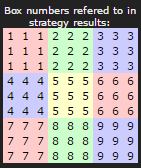
The convention on this site is to refer to columns with numbers, rows with letters (I is skipped since it looks like 1 and we use J). Box numbers may not be so obvious, so to the right is a plan of them). There is also a Glossary of terms.
Last Remaining Cell in a Box
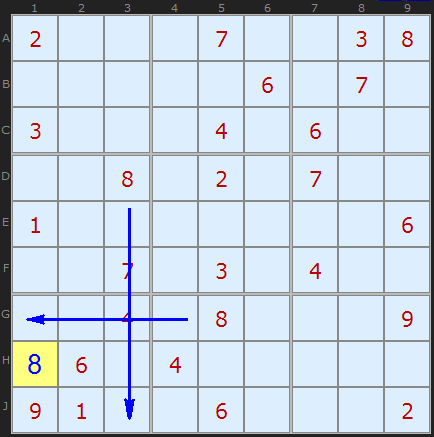
So the last remaining cell in box 7 for an 8 is H1.
Last Remaining Cell in a Row (or Column)
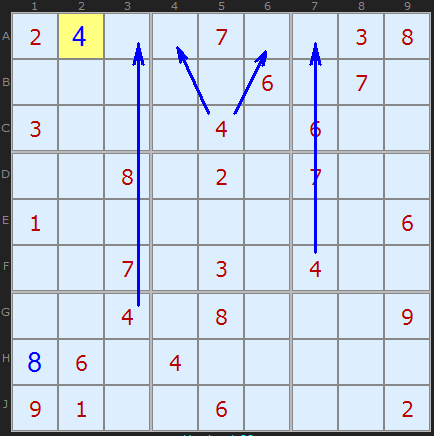
So the last remaining cell for 4 in the row is A2.
Pinned!
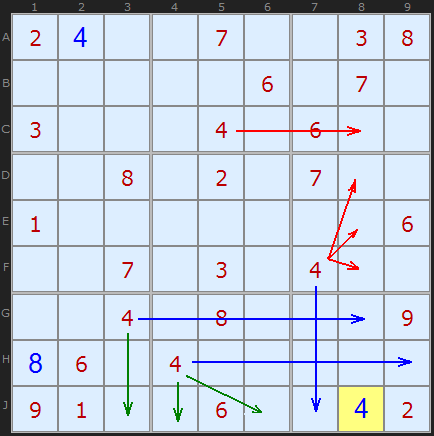
Sometimes there are several reasons for a placement. This 4 in J8 is a great example. In blue I have shown that 4 in J8 is the last remaining number in terms of the box it is in. The red + blue lines show it is the last number in column 8 and the green + blue lines demonstrate it is the last number in row J.
This 4 has been pinned to the board quite conclusively.
The Last Possible Number
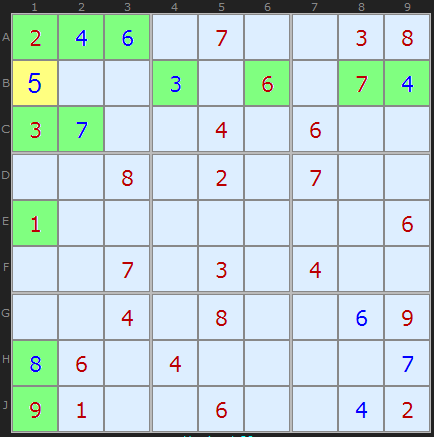
Eyeballing is actually quicker than checking each cell for the last possible number, but it is a valid approach, so I include it here. It is the sort of strategy a beginner thinks of when faced with the puzzle for the first time. It is best used when a cell stands out because all the other numbers seem to be in place.
Here the 5 in B1 can be determined because every other number from 1 to 9 apart from 5 is present in either the row, column or box (marked in green).
In the jargon, this is a Naked Single - if you were using candidates at this stage it would be the only candidate in the cell. The 'eyeballing' techniques help determine Hidden Singles since other candidates are possible in those places but at least one candidate is unique to a particular row, column and box. You can see this difference if you 'Take Step' with candidates turned on.